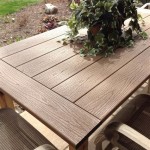How To Fix Sliding Patio Door Rollers Stuck Closed
Sliding patio doors offer convenient access to outdoor spaces, but their functionality relies heavily on a smooth-operating roller system. When these rollers become stuck, the door can become difficult or impossible to open, disrupting access and potentially posing a safety hazard. This article outlines the steps involved in diagnosing and resolving this common issue.
1. Identifying the Cause of Sticking
Before attempting repairs, it's crucial to pinpoint the reason the sliding door is stuck. Several factors can contribute to this problem. Accumulated dirt, debris, and grime can obstruct the rollers, preventing them from moving freely within their tracks. Over time, the rollers themselves can wear down or become damaged, hindering their ability to glide smoothly. Additionally, the tracks can become misaligned or bent, further impeding the rollers' movement. Finally, changes in temperature and humidity can cause the door frame to expand or contract, putting pressure on the rollers and making them stick.
Begin by visually inspecting the rollers, tracks, and door frame. Look for signs of obvious damage, obstructions, or misalignment. Try to gently move the door back and forth to feel for any resistance or sticking points. This initial assessment will help determine the appropriate course of action.
2. Cleaning the Tracks and Rollers
Often, a simple cleaning can resolve the sticking issue. Start by vacuuming the tracks and the area around the rollers to remove loose debris and dirt. A brush attachment can be particularly useful for dislodging stubborn particles. Next, use a damp cloth and a mild cleaning solution to wipe down the tracks and rollers, removing any remaining grime. A stiff brush, such as an old toothbrush, can be used to scrub away hardened debris. Ensure the tracks and rollers are completely dry before attempting to move the door.
For particularly stubborn dirt and grime, consider using a specialized track cleaner or lubricant. These products are designed to dissolve and remove built-up debris, facilitating smoother roller movement. Always follow the manufacturer's instructions when using these products.
3. Adjusting the Rollers
Most sliding patio doors have adjustable rollers that allow for minor height adjustments. If the door is dragging or rubbing against the track, adjusting the rollers might resolve the issue. Locate the adjustment screws, typically located on the bottom or side of the door frame near the rollers. Using a screwdriver, carefully turn the screws to raise or lower the rollers as needed. Small adjustments are usually sufficient; avoid making drastic changes, as this could further misalign the door.
Consult the manufacturer's instructions for specific guidance on adjusting the rollers for your particular door model. Improper adjustment can damage the rollers or the door frame.
4. Repairing or Replacing Damaged Components
If cleaning and adjusting the rollers fail to resolve the issue, the rollers or tracks might be damaged and require repair or replacement. Inspect the rollers for signs of wear, cracks, or flat spots. Similarly, examine the tracks for bends, dents, or misalignment. Minor damage to the tracks can sometimes be corrected by gently tapping them back into place with a rubber mallet. However, significant damage usually necessitates replacement.
Replacing rollers or tracks typically requires removing the door from its frame. This can be a complex process, and it's often advisable to consult a qualified professional for assistance. Attempting to remove and replace components without the necessary expertise could result in further damage or injury.
5. Lubricating the Tracks and Rollers
Once the tracks and rollers are clean and any necessary repairs or adjustments have been made, lubricating them can further improve the door's operation. Apply a silicone-based lubricant specifically designed for sliding doors to the tracks and rollers. Avoid using oil-based lubricants, as these can attract dirt and debris, exacerbating the sticking issue. The silicone lubricant will help reduce friction and ensure smooth gliding.
Regular lubrication can prevent future sticking and extend the lifespan of the rollers and tracks. It's recommended to lubricate the door's moving parts at least once a year, or more frequently if the door is used heavily.
Maintaining a well-functioning sliding patio door involves regular cleaning, inspection, and lubrication. Addressing sticking issues promptly can prevent further damage and ensure the door continues to operate smoothly and safely for years to come. If the problem persists after attempting these troubleshooting steps, consulting a professional door repair service is advisable.

How To Fix An Old Patio Sliding Door That Won T Slide Anymore

Sliding Door Stuck How To Replace The Rollers

Sliding Glass Door Hard To Open And Close Adjust Rollers

Tips Tricks How To Fix 6 Common Sliding Glass Door Problems Windsor Windows

How To Fix A Sticking Or Heavy Sliding Door

How To Fix A Sliding Door Tips Your

Sliding Glass Door Hard To Open And Close Diy

How To Fix A Sliding Door Tips Your

Need To Fix Stuck Patio Door Check Out Our Guide Here

Need To Fix Stuck Patio Door Check Out Our Guide Here








